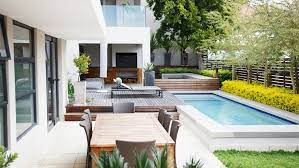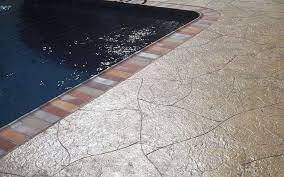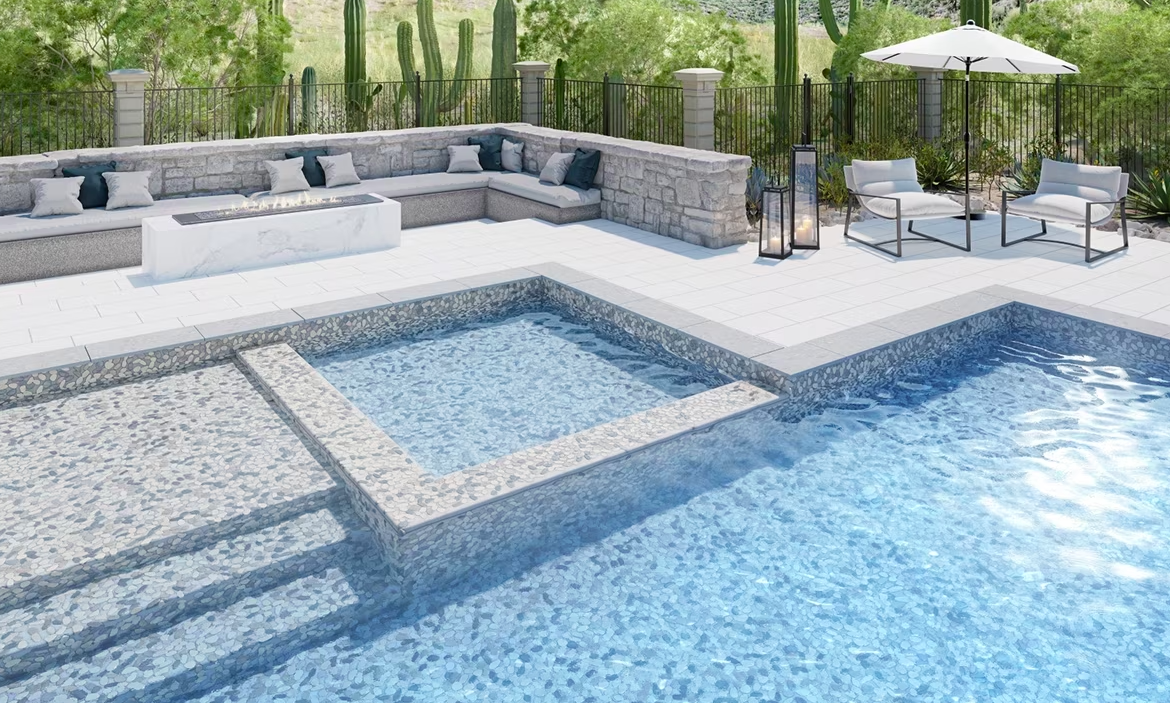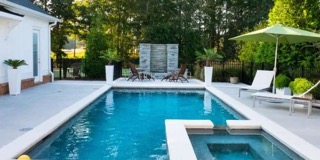If you own a pool or are considering a new installation, you may have researched the different pool deck material options. There are many different materials to choose from, but one of the most popular is brick pavers and travertine. Both have their own benefits and drawbacks, so how do you decide which is right for your needs?
There are important facts to consider when choosing a new material for your pool deck. The climate is a major factor – if you live in an area with high humidity, travertine may be a better option because brick pavers can absorb moisture and become slippery. Travertine is also a good choice if you have small children or pets, as it is non-slip and scratch-resistant.
First, let’s learn more about these materials and the advantages of using each one.
Brick Pavers:
Brick pavers are typically made from natural clay, fired at high temperatures to increase durability. Brick pavers are available in many different colors and sizes, making them very versatile for any exterior design theme. Some of the most popular brick paver colors are red, brown, gray, tan, black, and white. With so many options available, you can find a color that will work with your current pool décor or complimentary décor elements on your home’s exterior.
When installing brick pavers around a pool area, it is important to use mortar as a backfill if concrete anchors are not used. This protects against shifting and loosening of the bricks over time due to ground swelling during wet weather conditions. Over time some bricks may need to be reset or replaced, but overall, brick pavers are a very durable choice for pool decking.
Installation Process for Brick Pavers:
Brick pavers must be installed either on a concrete base or with an interlocking system. A leveled and compacted gravel base is the preferred surface. However, it may also be installed directly on level soil or crushed rock. Before installing your brick pavers, you will need to ensure that any sharp objects (i.e., footers for gas lines) are covered and that trenches at least one inch deep and two inches wide are dug around the proposed installation area.
The paver sand bed should then be placed, followed by a mortar mix of 1 part Portland cement to 3 parts sand, carefully tamped into place for stability before laying your pavers. Extreme care should be taken when placing bricks in mortar to prevent any damage. The paver should be laid with 1/4 inch spacing between pavers. Edge joints should be staggered in the pattern for appearance and stability.
The bricks are typically installed in a running brick configuration which is set on their side, but they can also be installed in a herringbone or basket configuration, which are both set flat on their faces. Once your brick paver installation is complete, there will likely be mortar residue that needs to be swept away from the surface, although some leave it for an added design element.
Brick pavers offer a variety of installation options and come in many colors and sizes so they can easily match your home’s exterior and pool décor theme. If you choose to use brick pavers around your pool, be sure to use mortar as backfill and ensure that you have safety grips installed in walkways or on stairs.
Specific Advantages of Brick Pavers:
- Many colors and sizes available for a custom look
- Very durable – can withstand high traffic and weather conditions
- Mortar backfill recommended for added stability
Drawbacks of Choosing Brick Pavers:
- Some bricks may need to be reset or replaced over time
- Can become slippery when wet
Travertine:
Travertine is a type of limestone that is quarried in Italy and other parts of the world. It is available in many colors, including white, beige, brown, gray, and black. Travertine is a popular choice for pool decking because it is non-slip and scratch-resistant. It also has a natural look that will enhance any pool area.
One downside to travertine is that it can be slippery when wet. If you live in an area with high humidity or frequent rainfall, you may want to consider another material for your pool deck. Travertine should also not be used in areas where water could collect, such as around fountains or water features.
Installation Process for Travertine:
When travertine is not installed with mortar, it can become loose, making the surface even more slippery. Be sure to use grout around your travertine to create a non-skid effect that lasts for years. It’s also important to seal travertine after installation because it is porous and will absorb chlorinated water over time, which can discolor the material.
The installation process for travertine is not as involved as it is for some other pool deck materials. Generally, travertine can be installed over your existing surface and requires no digging or installation into the ground. Tiles are simply laid down in a pattern that will complement your pool area’s design theme.
Specific Advantages of Travertine:
- Natural look will enhance the pool area and décor
- Scratch and stain-resistant
Drawbacks of Travertine:
- Some colors can be slippery when wet
- Not recommended for areas with water collection or high humidity conditions
Cost Difference Between Brick Pavers and Travertine:
Brick pavers tend to be more expensive than travertine, although the price can vary depending on the color and size of the bricks. Travertine is usually less expensive than other natural stone materials, such as granite or marble.
Although installation costs may be higher for brick pavers, they are a more durable option in comparison to travertine. In the long run, you may save money by choosing brick pavers over travertine because they will not need to be replaced as often.
How to Choose a Pool Deck Material:
So, which is better for your pool deck – brick pavers or travertine? It really depends on your needs and what you are looking for in a material. If you are looking for a durable, long-lasting choice that will withstand high traffic and weather conditions, brick pavers are a good option. If you are looking for a natural look that will enhance your pool area décor, travertine is a good choice. Remember to consider the climate in your area when making your decision – if you live in an area with high humidity or frequent rainfall, choose a material that will not be slippery when wet.




